Movement mediation machine to create “Repe-dynamic” material experience
Compared to the precise qualities made by machines, craftsmanship is a symbol of individuality and liveness. Each artifact made by hand is slightly flawed and imperfect, indicating uniqueness. Such dynamic quality comes from the body movement during craftsmanship. Even in the context of digital fabrication, researchers keep finding methods to bring such quality back to the machine-made process.
“The general rule of using machines is that if the human body is weak, the machine should assist it…The machine is an alienated human body, but they are not inhuman.” (Richard Sennet, 2008) As we try to find the human qualities within digital fabrication, instead of merely going back to hand-made, it is crucial to ask: What is the specific value that emerges between human hands and machines? What qualities does it have that make it impossible to obtain with bare hands or digital fabrication machines? How should we position humans and machines in such a relationship?
This study investigates the intersection of hand-made and digital fabrication through experiments with clay carving using various subtractive manufacturing methods, ranging from hand-made to machine-made, with different levels of body engagement. These include directly with hands, physical tools, movement mediation machines, and CNC machines. A user test based on diary study was conducted to gather perspectives on the experiential qualities of patterns and summarized the discussion through qualitative analysis.
Year: 2024
Researcher: Jing Ya Huang
Coach: Bahareh Barati @Eindhoven University of Technology @Sensory Matters Squad
Special thanks: @Stadslab Eindhoven (for supporting the CNC execution)
Compared to the precise qualities made by machines, craftsmanship is a symbol of individuality and liveness. Each artifact made by hand is slightly flawed and imperfect, indicating uniqueness. Such dynamic quality comes from the body movement during craftsmanship. Even in the context of digital fabrication, researchers keep finding methods to bring such quality back to the machine-made process.
“The general rule of using machines is that if the human body is weak, the machine should assist it…The machine is an alienated human body, but they are not inhuman.” (Richard Sennet, 2008) As we try to find the human qualities within digital fabrication, instead of merely going back to hand-made, it is crucial to ask: What is the specific value that emerges between human hands and machines? What qualities does it have that make it impossible to obtain with bare hands or digital fabrication machines? How should we position humans and machines in such a relationship?
This study investigates the intersection of hand-made and digital fabrication through experiments with clay carving using various subtractive manufacturing methods, ranging from hand-made to machine-made, with different levels of body engagement. These include directly with hands, physical tools, movement mediation machines, and CNC machines. A user test based on diary study was conducted to gather perspectives on the experiential qualities of patterns and summarized the discussion through qualitative analysis.
Year: 2024
Researcher: Jing Ya Huang
Coach: Bahareh Barati @Eindhoven University of Technology @Sensory Matters Squad
Special thanks: @Stadslab Eindhoven (for supporting the CNC execution)

Observation
Starting from finding a pattern in daily life. The pattern was found on the car window. It looks like puddles, with elongated depressions ranging from shallow to deep, with smooth edges. It is linear, parallel, continuous, with irregular tiny gaps.
Starting from finding a pattern in daily life. The pattern was found on the car window. It looks like puddles, with elongated depressions ranging from shallow to deep, with smooth edges. It is linear, parallel, continuous, with irregular tiny gaps.

Hand-made
Try to make the pattern with hands and tools. To recreate the puddle-like shapes, I use a metal ring and a string, and rotate it with centrifugal force. It leaves irregular oval-shaped pits on the surface of clay.
Try to make the pattern with hands and tools. To recreate the puddle-like shapes, I use a metal ring and a string, and rotate it with centrifugal force. It leaves irregular oval-shaped pits on the surface of clay.

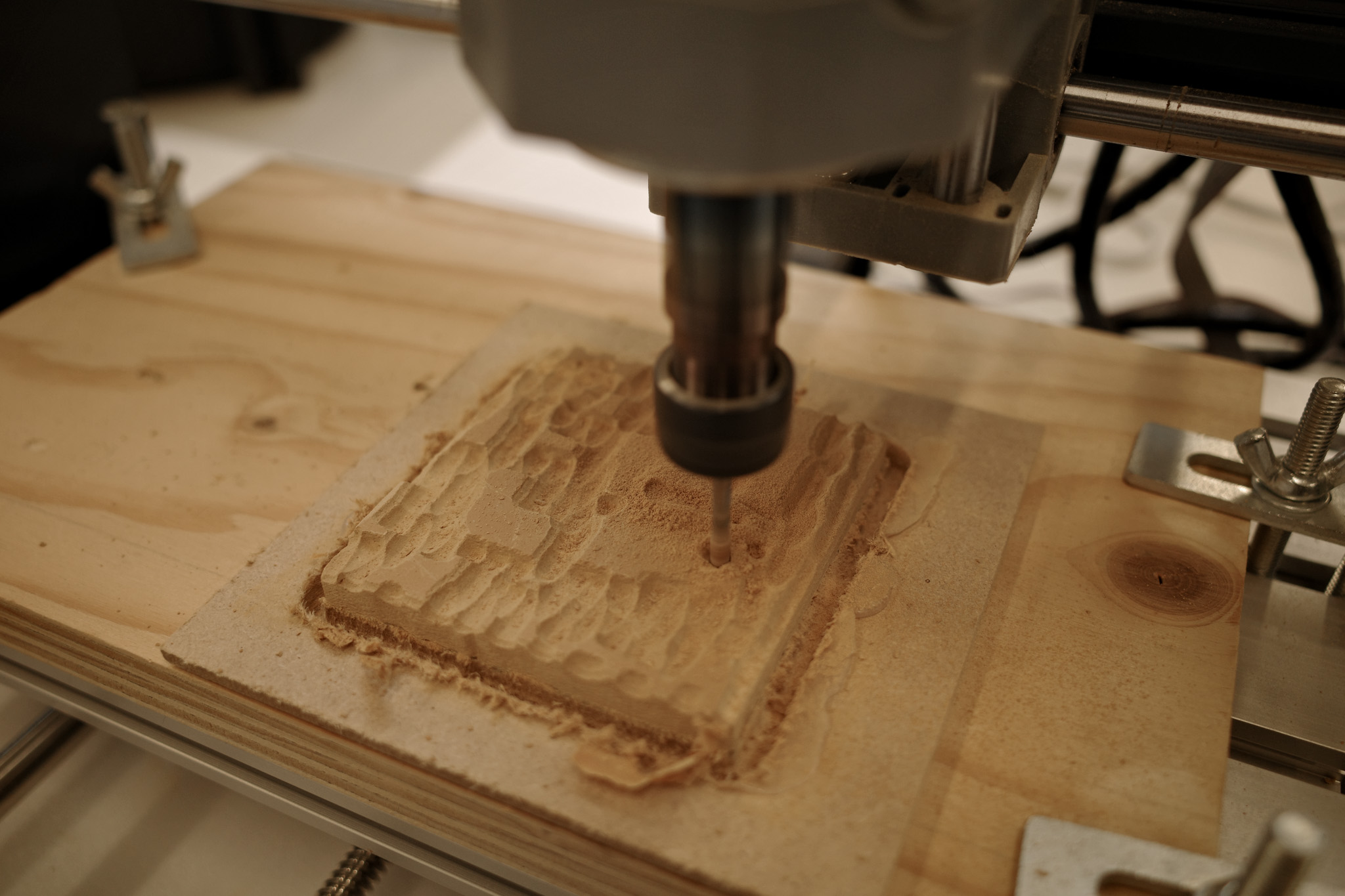
Machine-made
To make the comparison, I used Grasshopper to create a random oval-shaped pattern and execute it with Computer Numeric Control (CNC). Carved by a driller, the resulting clay pattern shows a stable quality without any human hand engagement. Yet due to the nature of clay, the detail crushed is slightly flawed which brings it a sense of nature.
To make the comparison, I used Grasshopper to create a random oval-shaped pattern and execute it with Computer Numeric Control (CNC). Carved by a driller, the resulting clay pattern shows a stable quality without any human hand engagement. Yet due to the nature of clay, the detail crushed is slightly flawed which brings it a sense of nature.

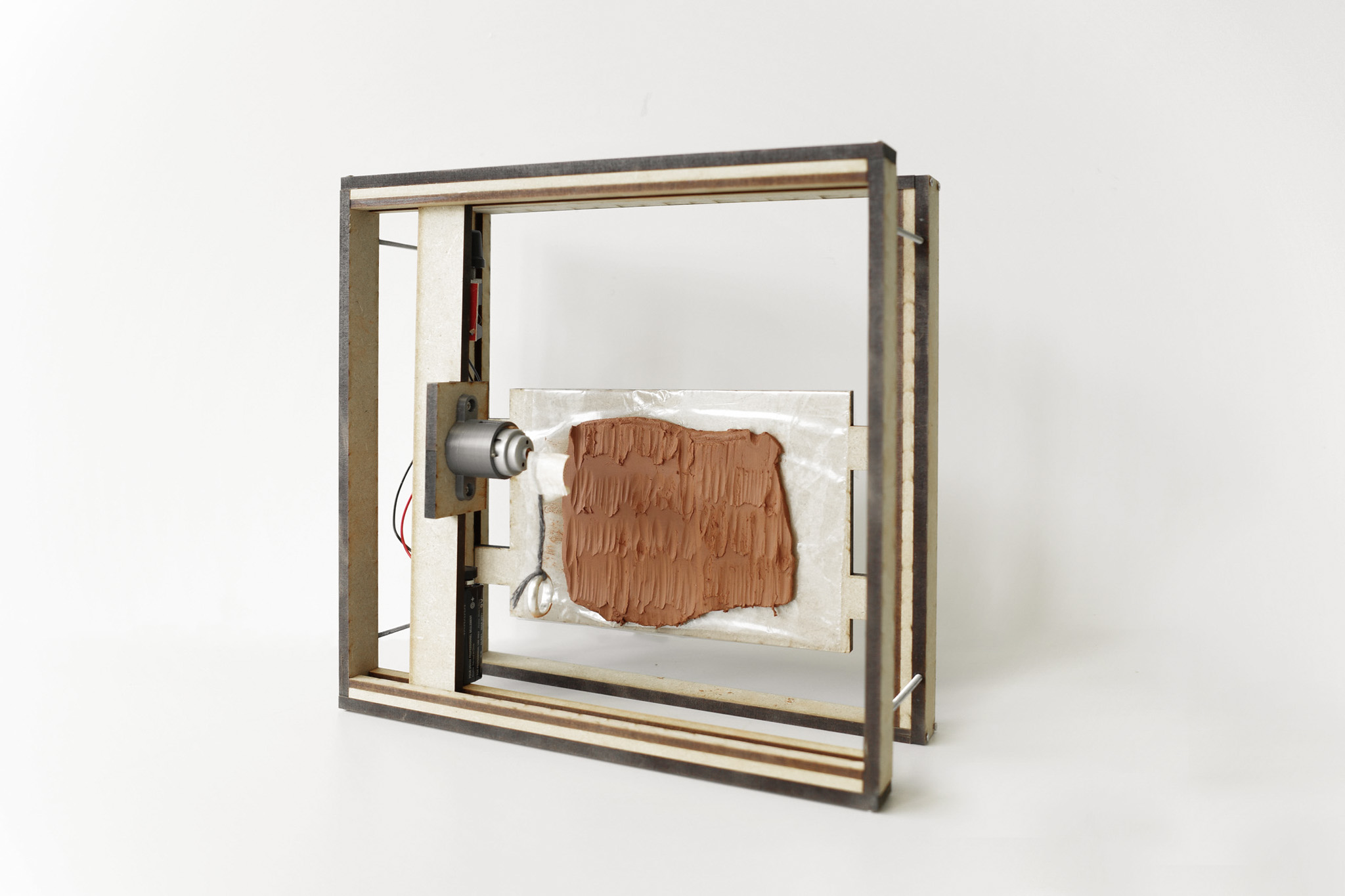
In between-MMM1
What if, we integrate the body moment into a machine? “Movement mediation machine v1” was created based on the idea. By moving motors with my hands, it allows me to co-create patterns with the machine. It shows a stable linear pattern. If you try to rotate this pattern, you can see the shadow changes under light, which shows the directionality of the pattern carving.
What if, we integrate the body moment into a machine? “Movement mediation machine v1” was created based on the idea. By moving motors with my hands, it allows me to co-create patterns with the machine. It shows a stable linear pattern. If you try to rotate this pattern, you can see the shadow changes under light, which shows the directionality of the pattern carving.
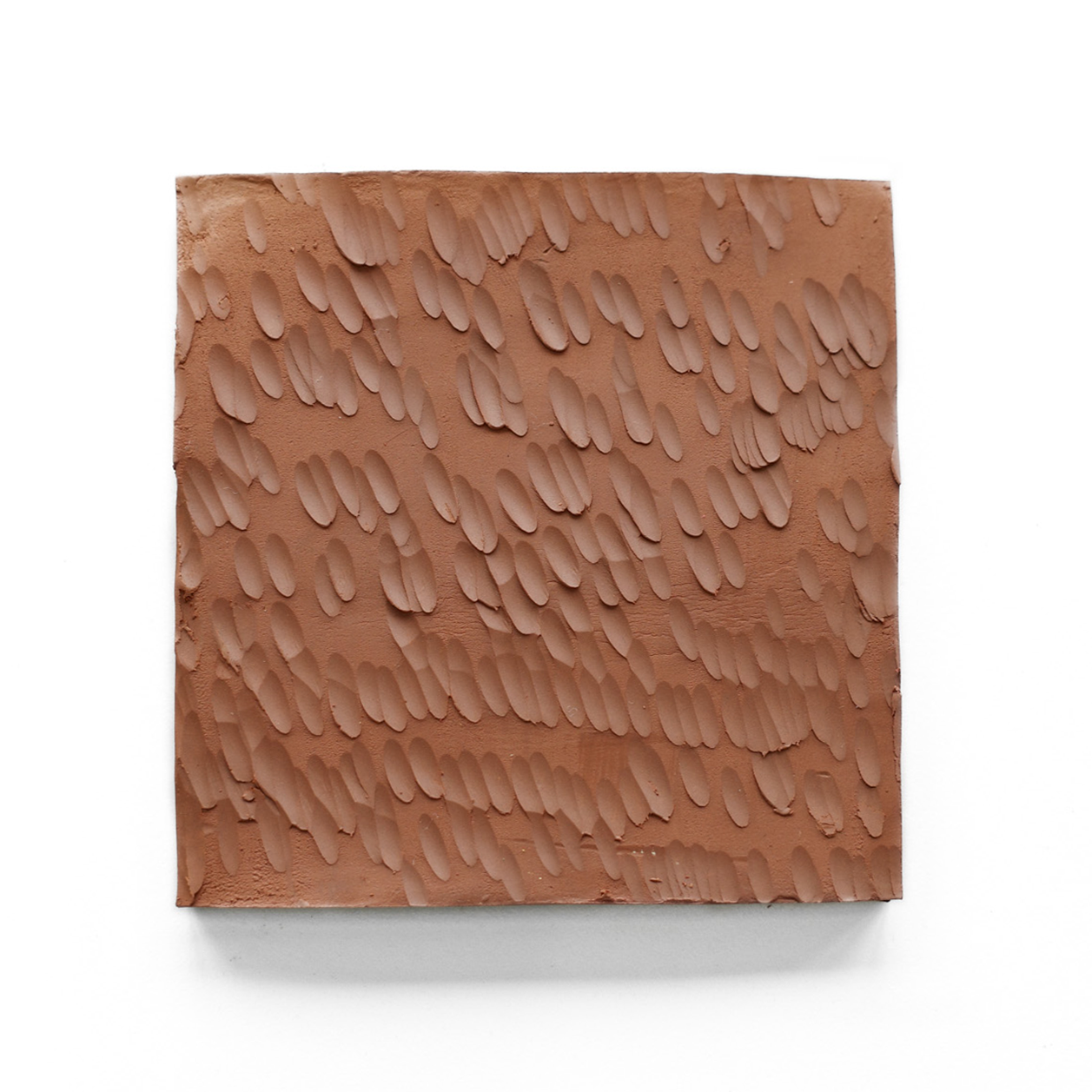
In between-MMM1
I tried to reorient the metal ring during the process of carving. It helped me create chaotic patterns with a specific rhythm and different directions.
I tried to reorient the metal ring during the process of carving. It helped me create chaotic patterns with a specific rhythm and different directions.
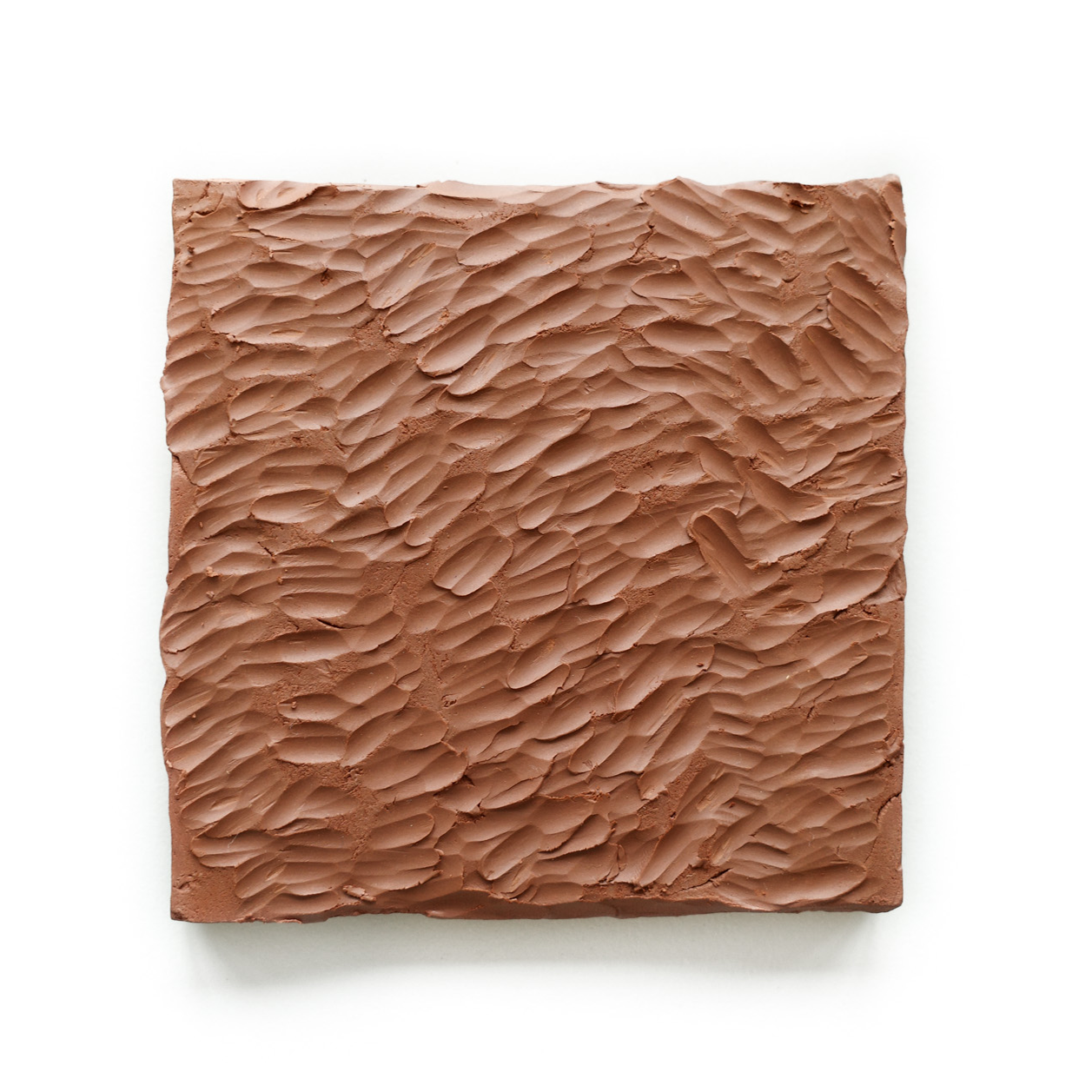

In between-MMM2
What if, we give more control to the machine? “Movement mediation machine v2” was created. Controlling the motors with code, it reduces the degree of human body intervention while giving the machine more space to control the movement. The final pattern produces a wave-like effect, with layers overlapping on each other, and the final form echoes the carving process.
What if, we give more control to the machine? “Movement mediation machine v2” was created. Controlling the motors with code, it reduces the degree of human body intervention while giving the machine more space to control the movement. The final pattern produces a wave-like effect, with layers overlapping on each other, and the final form echoes the carving process.

In between-MMM2
Clay with varying thickness and moisture can perform completely different textures under the same machine parameters.
Clay with varying thickness and moisture can perform completely different textures under the same machine parameters.
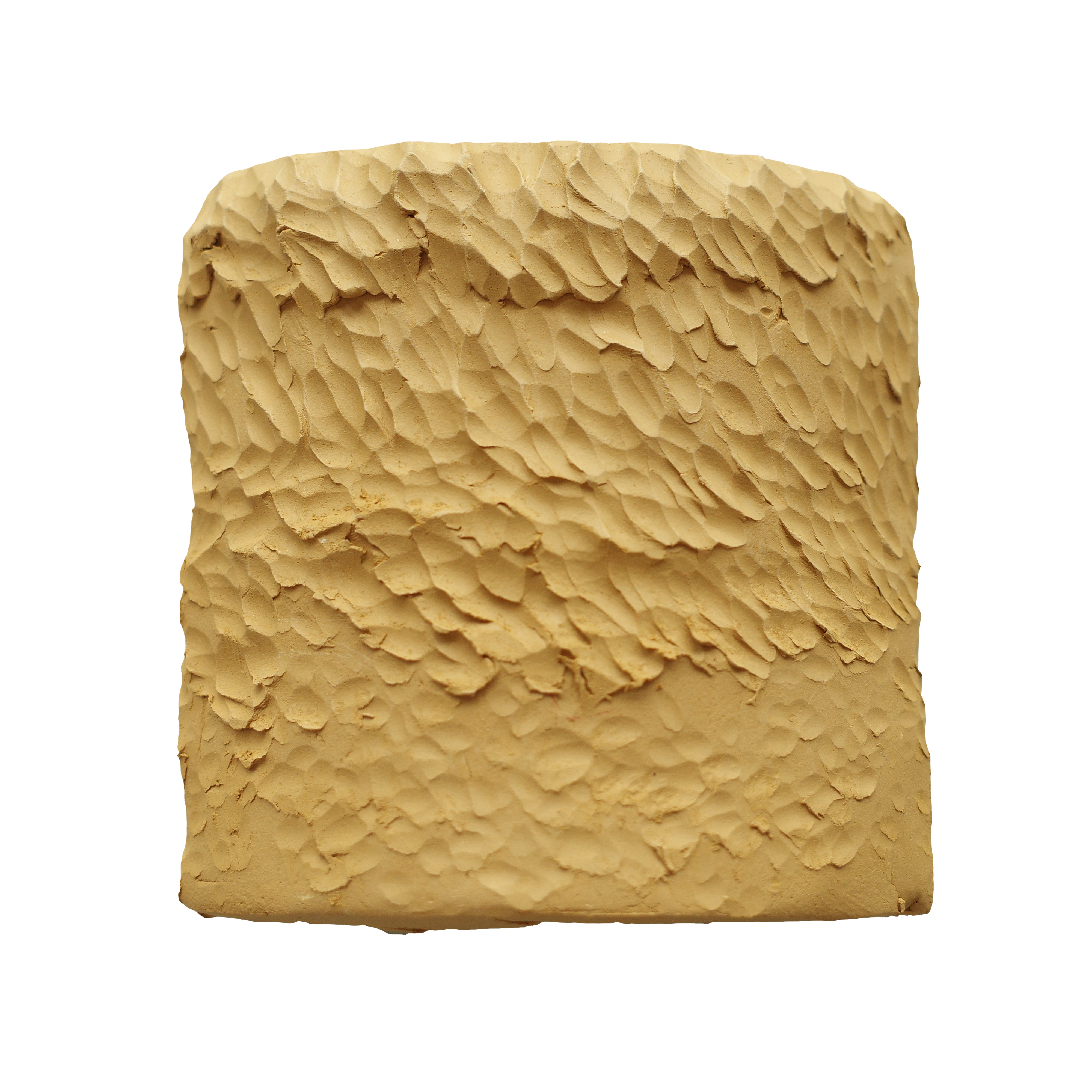

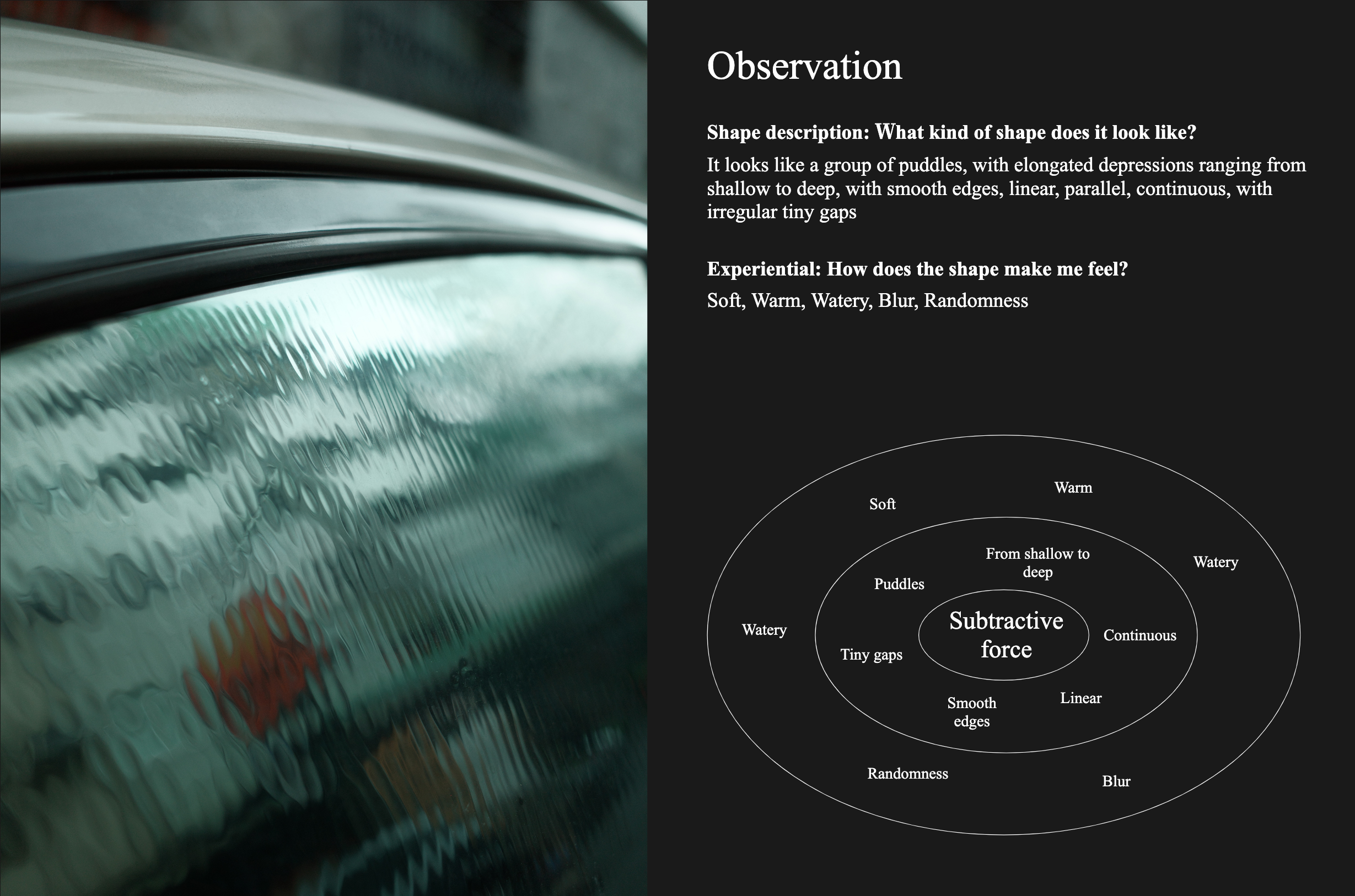


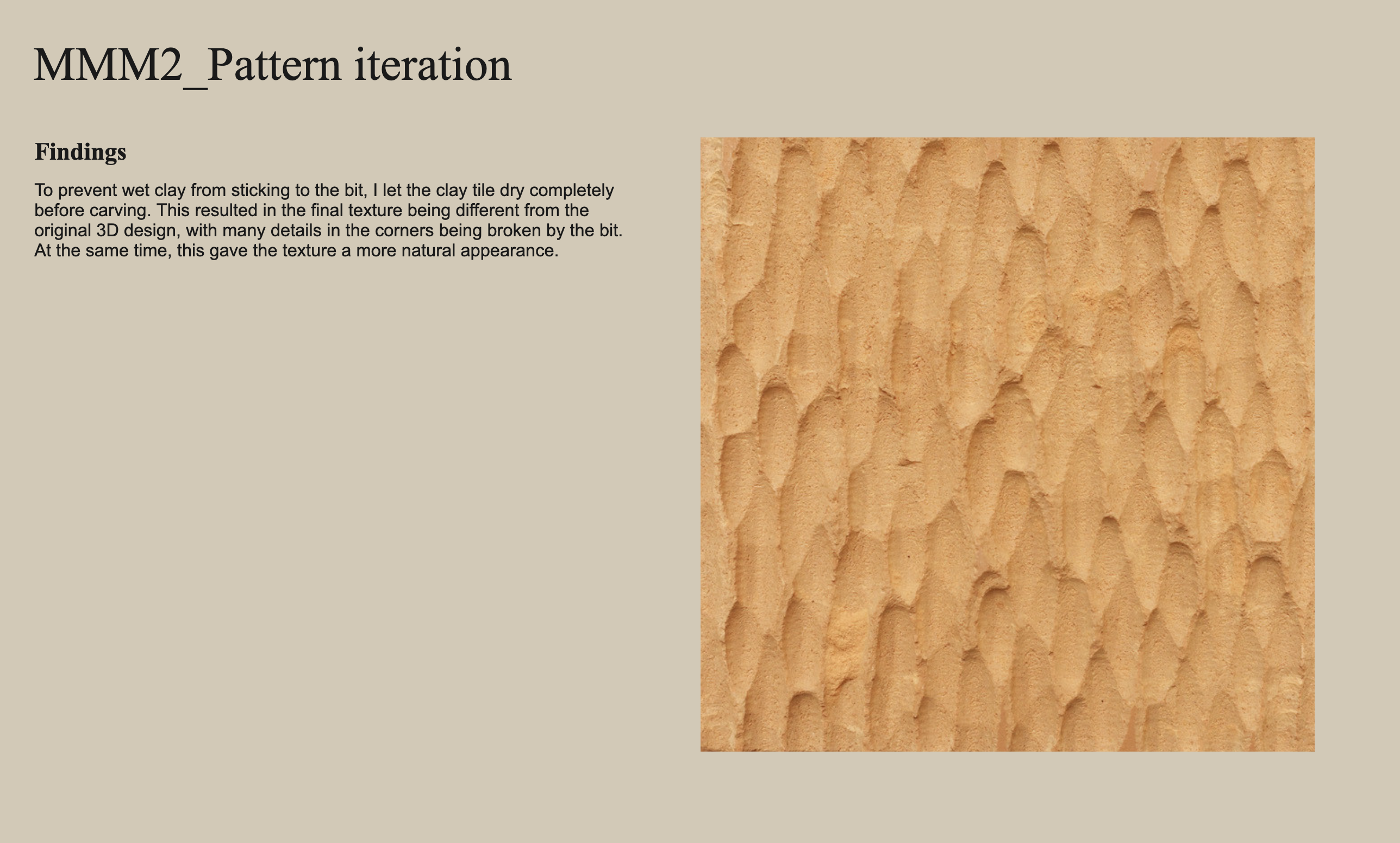
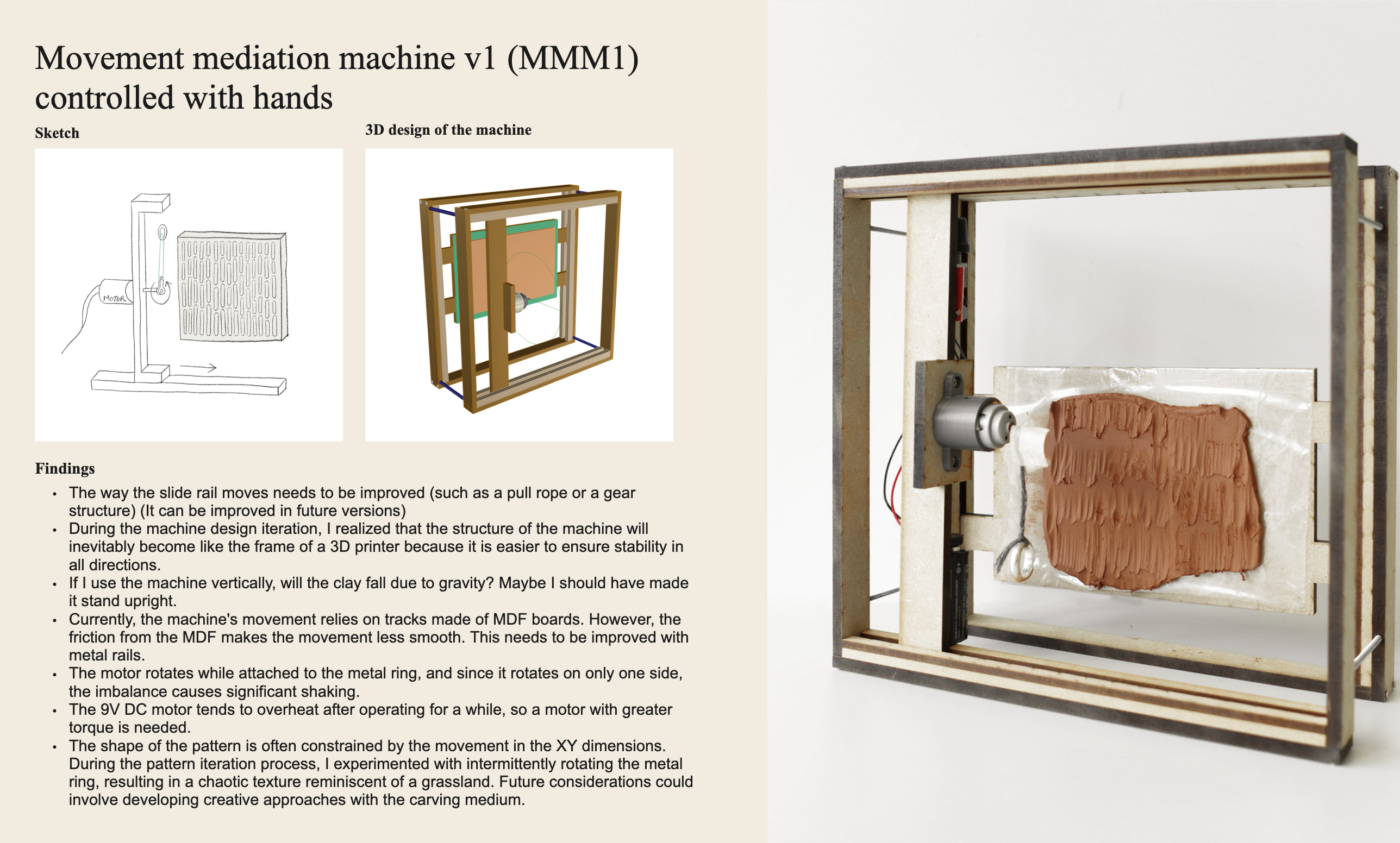

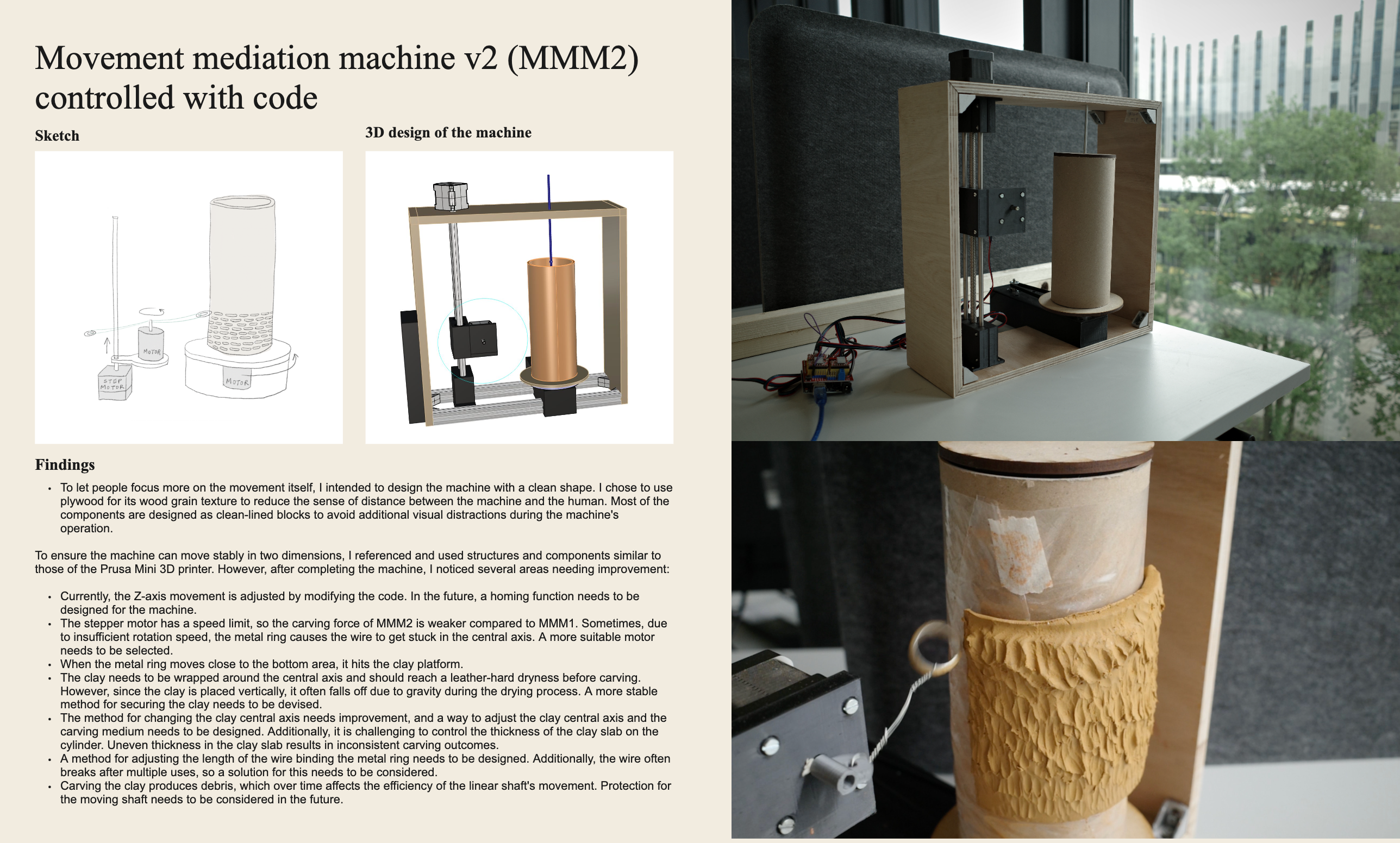
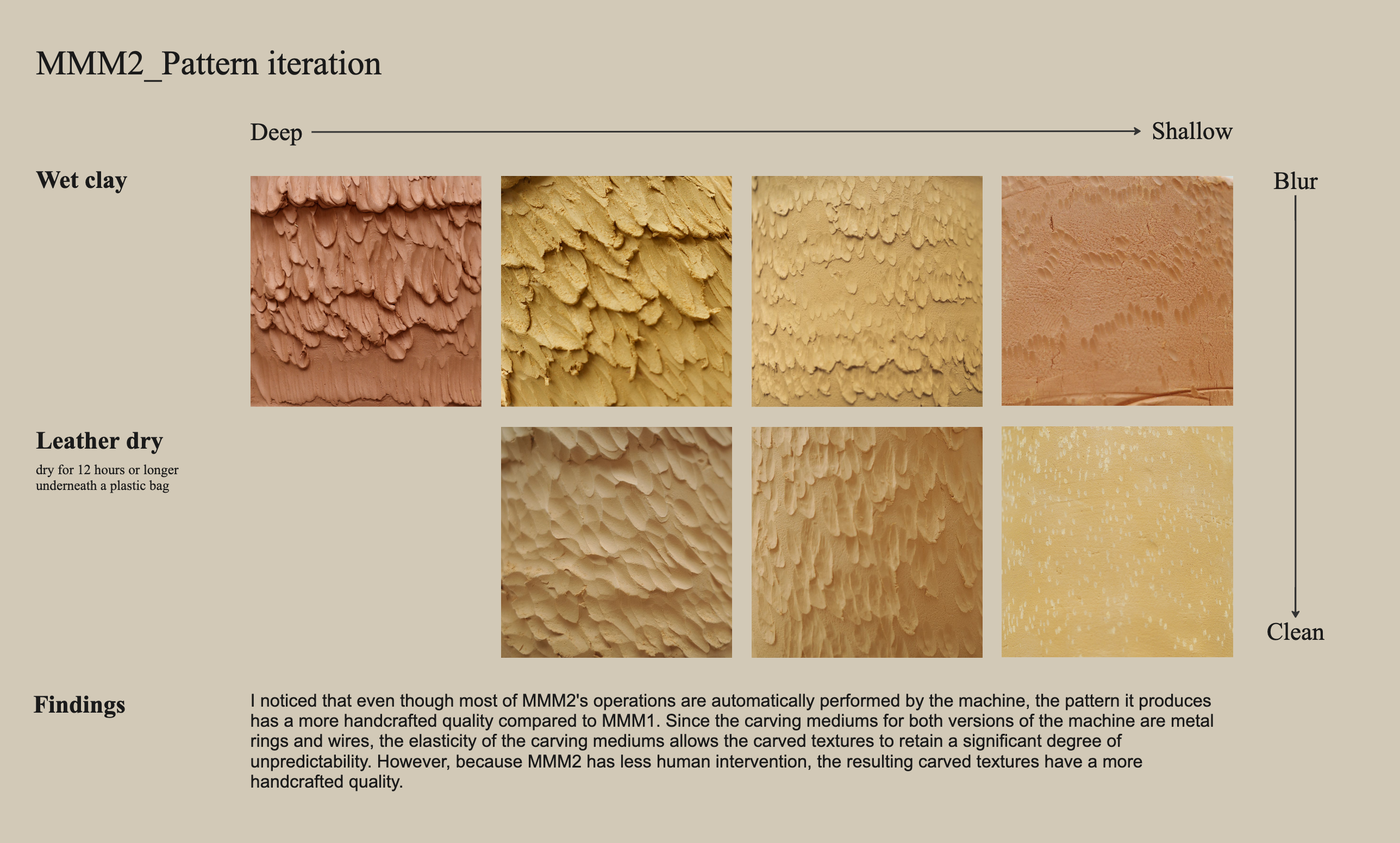
︎︎︎DIARY STUDY
To transform abstract language into practical basic data, this study taxonomy systematically through the Material-Driven Design (MDD) of Elvin Karana et al.’s study[1]. MDD evaluates materials not only by focusing on their physical properties, but also on their function, expressiveness, the reactions it cause in us, and the actions it prompts us to take.” A diary template is a tool to unfold the process systematically which adopted to push the research forwards with well recorded parameters and insights.
[1] Karana, E., Barati, B., Rognoli, V., & Zeeuw Van Der Laan, A. (2015). Material driven design (MDD): A method to design for material experiences. International journal of design, 9(2), 35-54.
To transform abstract language into practical basic data, this study taxonomy systematically through the Material-Driven Design (MDD) of Elvin Karana et al.’s study[1]. MDD evaluates materials not only by focusing on their physical properties, but also on their function, expressiveness, the reactions it cause in us, and the actions it prompts us to take.” A diary template is a tool to unfold the process systematically which adopted to push the research forwards with well recorded parameters and insights.
[1] Karana, E., Barati, B., Rognoli, V., & Zeeuw Van Der Laan, A. (2015). Material driven design (MDD): A method to design for material experiences. International journal of design, 9(2), 35-54.
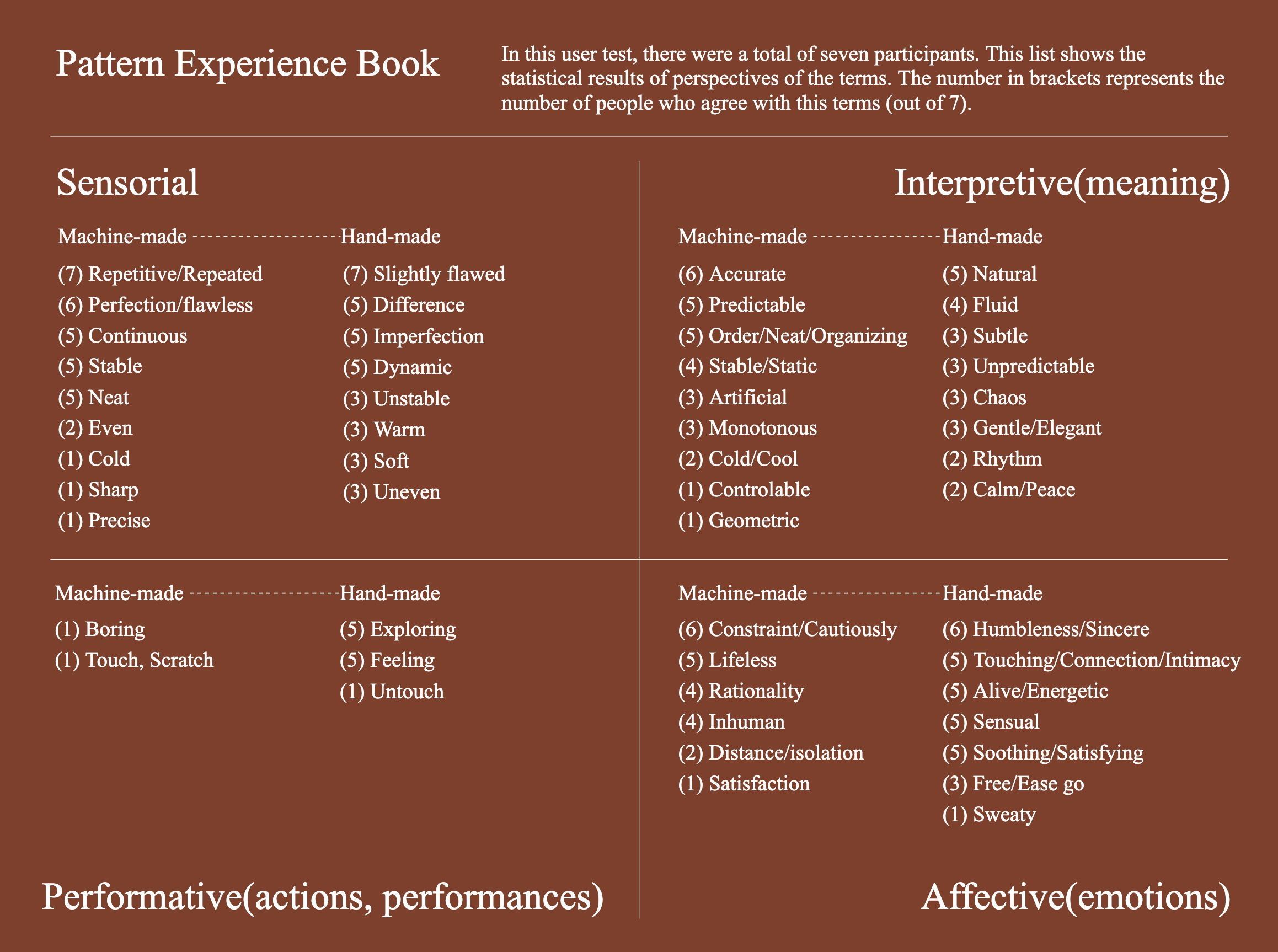
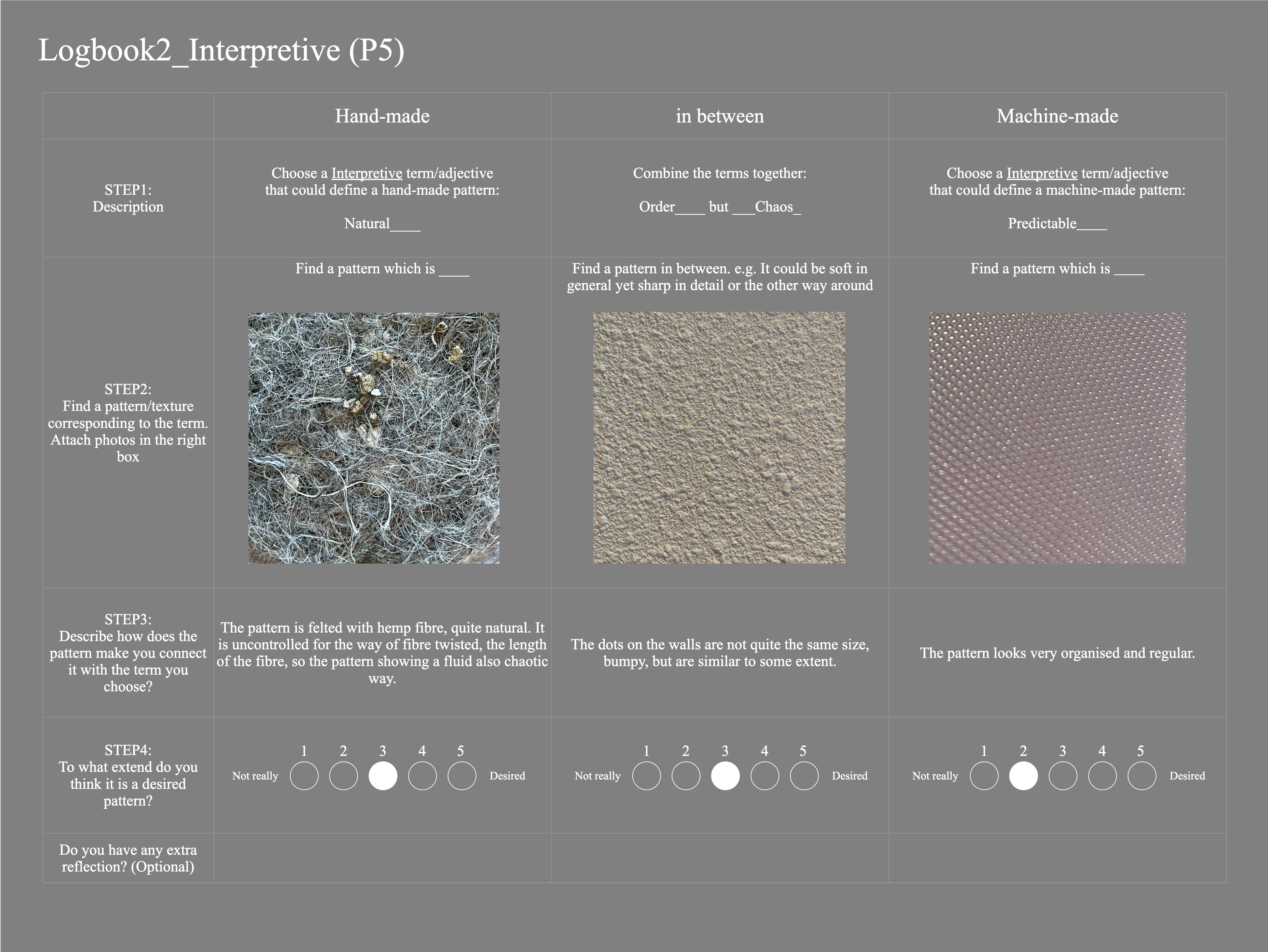


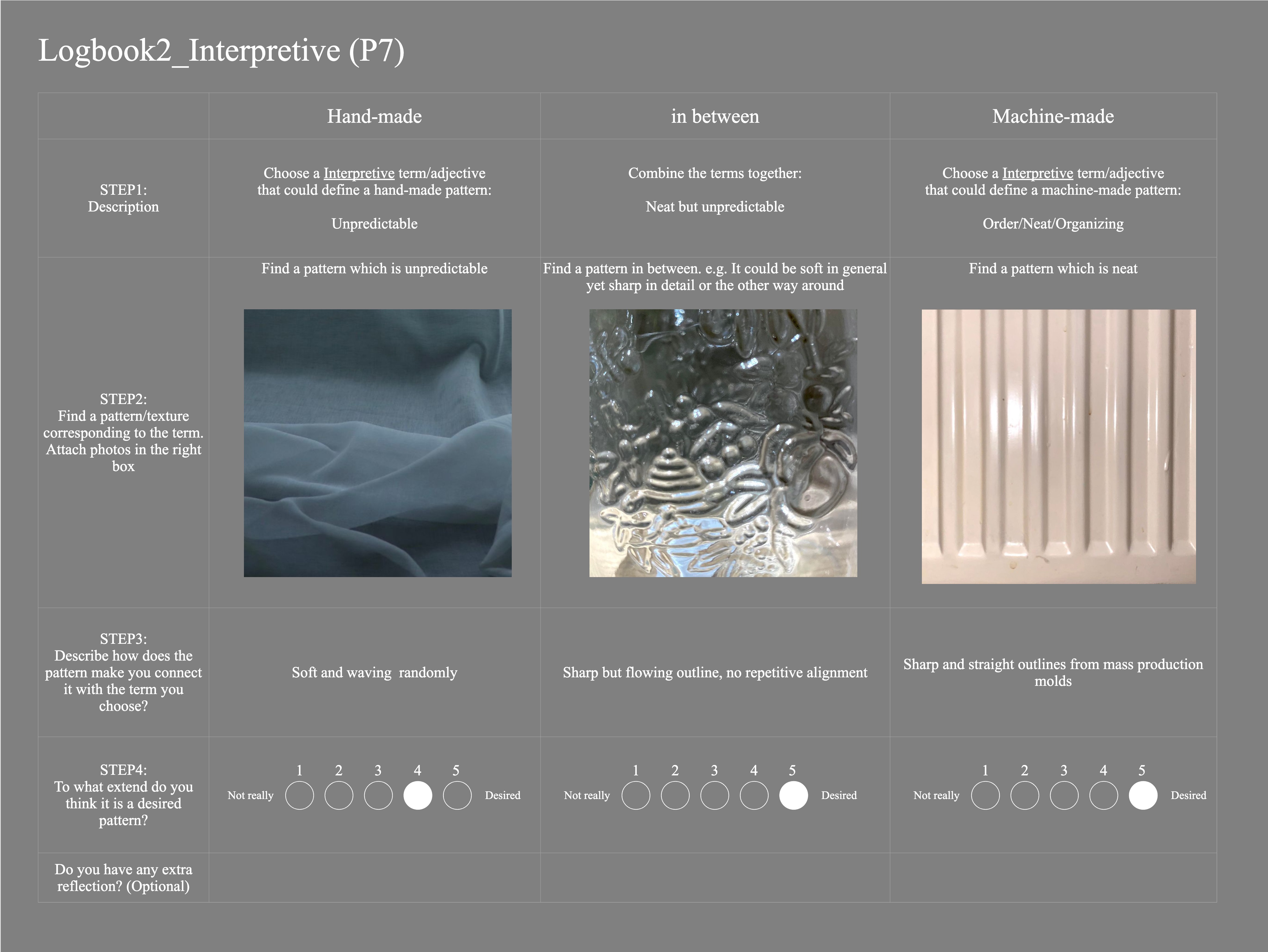


︎︎︎USER TEST
In this section, a user test based on a diary study is conducted to find a general perspective on the experiential qualities of patterns with participants and their insight. The user test aimed to explore: What are the experiential qualities of hand-made patterns, machine-made patterns, and something in between? The full book can be found here.
Pattern Experience Book As how we interpret terms could differ from people—for instance, when thinking of the word "warm", everyone may interpret it differently. To transform abstract language into generalized data, this study taxonomy systematically by the experiential quality categorization from material-driven design. In the “Pattern Experience Book”, the experiential qualities of hand-made and machine-made were listed respectively. The participants will fill in the check box with white color if they agree with the terms or not, or add their terms.
Logbook To collect patterns of hand-made, machine-made, and something in between, participants will pick one term from the previous “Pattern Experience Book” that can describe the hand-made and machine-made respectively, and combine the terms into a sentence(e.g. geometric but elegant). They will find a corresponding pattern in daily life based on the terms and the sentences.
In this section, a user test based on a diary study is conducted to find a general perspective on the experiential qualities of patterns with participants and their insight. The user test aimed to explore: What are the experiential qualities of hand-made patterns, machine-made patterns, and something in between? The full book can be found here.
Pattern Experience Book As how we interpret terms could differ from people—for instance, when thinking of the word "warm", everyone may interpret it differently. To transform abstract language into generalized data, this study taxonomy systematically by the experiential quality categorization from material-driven design. In the “Pattern Experience Book”, the experiential qualities of hand-made and machine-made were listed respectively. The participants will fill in the check box with white color if they agree with the terms or not, or add their terms.
Logbook To collect patterns of hand-made, machine-made, and something in between, participants will pick one term from the previous “Pattern Experience Book” that can describe the hand-made and machine-made respectively, and combine the terms into a sentence(e.g. geometric but elegant). They will find a corresponding pattern in daily life based on the terms and the sentences.
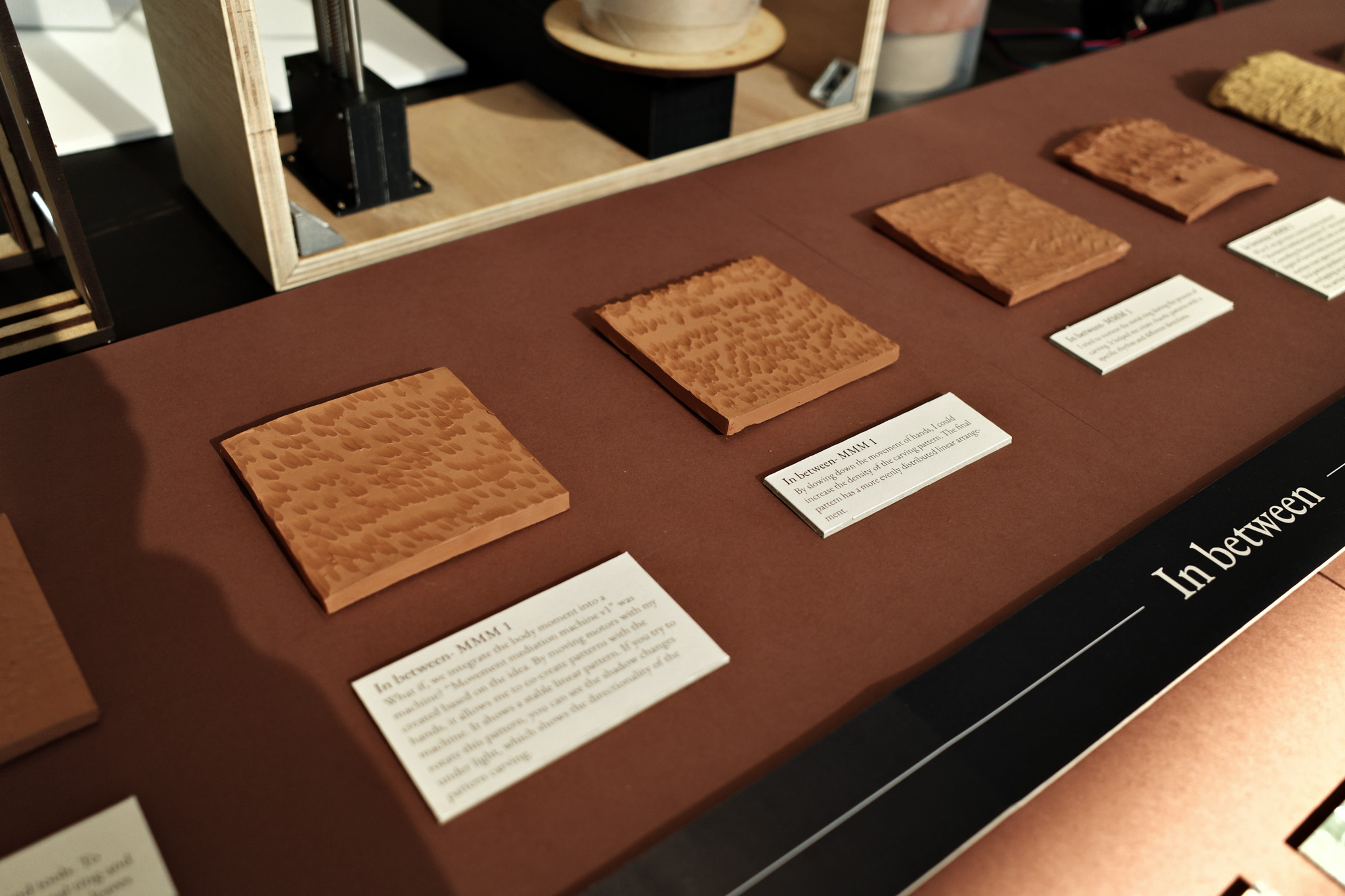
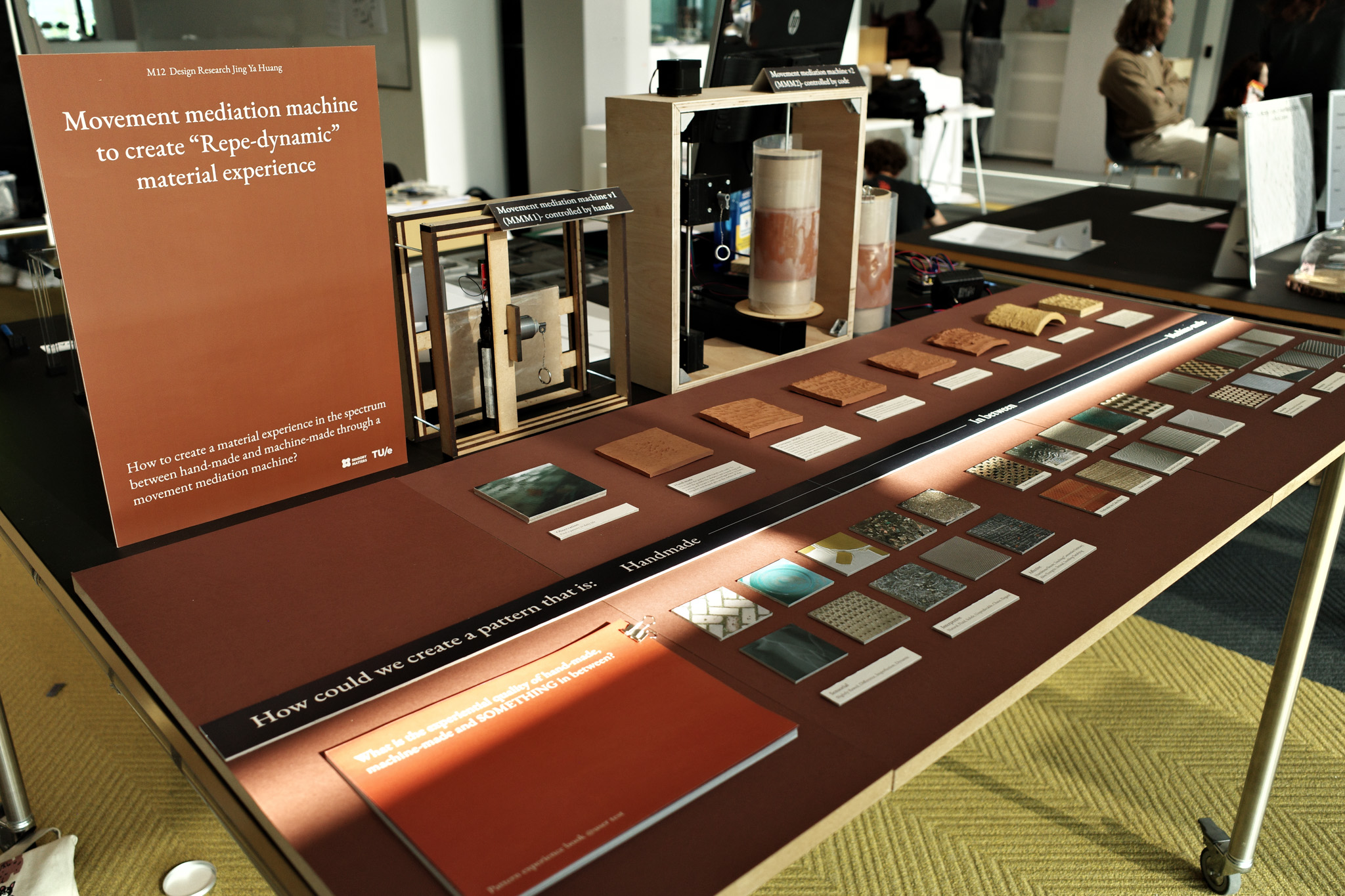
︎︎︎DISCUSSION
What is a hand-made pattern?"Slightly flawed" is a characteristic all agreed upon in the user test as experiential quality of handmade items. If we closely observe the horizontal and vertical, the unit sizes reveals inconsistencies. This makes such patterns relatively unpredictable."Time" or "traces" are other crucial factors. After an item has been used for a while, its texture develops handmade characteristics over time, even if it was initially machine-made, much like antiques or vintage items.
However, the item needs to have been used by hand to acquire such quality. "Because even if something has been sitting somewhere for a long time, it might not have that feeling. It needs to be used by human hands, just like a true handmade item." When distinguishing between handmade and machine-made patterns, the definition of handmade is relatively ambiguous for most people. Participants even classified natural textures as handmade. "Normally I tell whether a material is not machine-made or it's machine-made. I don’t actually pick one that’s human-made but I kind of cancel the question by whether it’s machine-made or not."
What is a machine-made pattern?"Repetition" is a common feature of machine-made textures. The shapes of the textures are very neat, the lines are perfectly straight, and they are highly consistent, with no visible differences between hundreds of repeated patterns to the naked eye—such textures are predictable.
Additionally, participants mentioned using "human power" as a criterion for judgment. "If it far exceeds human capabilities, then I would consider it a machine-made pattern," one participant explained. "I would say that what is meant by exceeding human power here is more like exceeding my own capabilities or as an average for all human beings. There are certain materials that you couldn’t really replicate with both of my hands and the knowledge or technologies I have in my mind, then I will assume it is beyond my or average human power."
What is a in-between pattern?Participants indicated that they find it difficult to categorize textures as "in-between." However, when they have both machine-made and handmade textures as references, they find it easier to identify patterns that fall between the two.
In my exploration of all the carved textures, the patterns made by CNC were considered the most in-between. Participants liked this texture the most because it was difficult to guess how it was made. "If you didn’t tell me. I think it’s interesting enough to lead at least me or potentially any other audiences to think it’s quite sensual even a machine could do this. But it is also quite accurate in a way for human to do this. It kind of meets the criteria of right in the middle. I would expect the machine to be a little bit sensual and I want humans to be more precise. So it is in between." In summary, machine-made textures with a touch of sensibility or precise handmade textures can be considered in-between.
What is a hand-made pattern?"Slightly flawed" is a characteristic all agreed upon in the user test as experiential quality of handmade items. If we closely observe the horizontal and vertical, the unit sizes reveals inconsistencies. This makes such patterns relatively unpredictable."Time" or "traces" are other crucial factors. After an item has been used for a while, its texture develops handmade characteristics over time, even if it was initially machine-made, much like antiques or vintage items.
However, the item needs to have been used by hand to acquire such quality. "Because even if something has been sitting somewhere for a long time, it might not have that feeling. It needs to be used by human hands, just like a true handmade item." When distinguishing between handmade and machine-made patterns, the definition of handmade is relatively ambiguous for most people. Participants even classified natural textures as handmade. "Normally I tell whether a material is not machine-made or it's machine-made. I don’t actually pick one that’s human-made but I kind of cancel the question by whether it’s machine-made or not."
What is a machine-made pattern?"Repetition" is a common feature of machine-made textures. The shapes of the textures are very neat, the lines are perfectly straight, and they are highly consistent, with no visible differences between hundreds of repeated patterns to the naked eye—such textures are predictable.
Additionally, participants mentioned using "human power" as a criterion for judgment. "If it far exceeds human capabilities, then I would consider it a machine-made pattern," one participant explained. "I would say that what is meant by exceeding human power here is more like exceeding my own capabilities or as an average for all human beings. There are certain materials that you couldn’t really replicate with both of my hands and the knowledge or technologies I have in my mind, then I will assume it is beyond my or average human power."
What is a in-between pattern?Participants indicated that they find it difficult to categorize textures as "in-between." However, when they have both machine-made and handmade textures as references, they find it easier to identify patterns that fall between the two.
In my exploration of all the carved textures, the patterns made by CNC were considered the most in-between. Participants liked this texture the most because it was difficult to guess how it was made. "If you didn’t tell me. I think it’s interesting enough to lead at least me or potentially any other audiences to think it’s quite sensual even a machine could do this. But it is also quite accurate in a way for human to do this. It kind of meets the criteria of right in the middle. I would expect the machine to be a little bit sensual and I want humans to be more precise. So it is in between." In summary, machine-made textures with a touch of sensibility or precise handmade textures can be considered in-between.